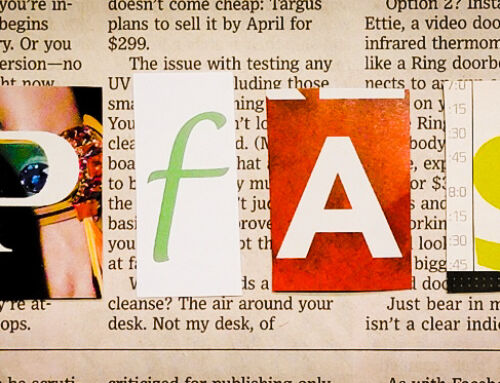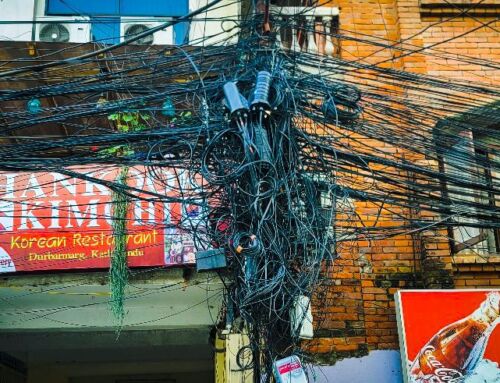View by Topic
Recent Articles
-
New Environmental Laws from the 2024 Maryland Legislative SessionSaturday, April 27th, 2024
-
EPA Designates PFOA and PFOS as Hazardous Substances under Superfund LawSaturday, April 20th, 2024
-
Federal Government Finalizes New Efficiency Standards for LightbulbsSaturday, April 13th, 2024
-
2024 IECC is Final After Addressing Preemption IssuesSaturday, April 6th, 2024
-
Settlement Portends Broad Failure in Attempts to Ban Natural GasSaturday, March 30th, 2024
View by Month/Year
“Green Building Law Update” Headlines
Recent Articles & News from
Stuart Kaplow’s blog
at GreenBuildingLawUpdate.com
- EPA Takes Action: PFOA and PFOS Now Hazardous Substances Under Superfund Law April 21, 2024
- Shedding Light on the Future: The Evolution of Lightbulbs in the Wake of New Energy Efficiency Standards April 14, 2024
- 2024 International Energy Conservation Code is Final After Addressing Preemption April 7, 2024
- Settlement Portends Broad Failure in Attempts to Ban Natural Gas March 31, 2024
Subscribe to the Green Building Law Update!
Stuart Kaplow brings his expertise and extensive experience to the table with his unique digital publication, "Green Building Law Update". Subscribers receive regular updates to keep them informed about important issues surrounding Environmental Law, Green Building & Real Estate Law, as well as the emerging demand for Environmental Social Governance (ESG).
Get fresh content through the lense of Stuart Kaplow's cutting-edge expertise, innovative commentary and insider perspective. Don't miss another issue! Subscribe below.

Advantages of Adopting the Model State Indoor Air Quality Act: Prioritizing Human Health Amid Energy Concerns
The quality of the air we breathe is fundamental to our well being if not life itself. With Americans spending nearly 90% of their lives indoors, the importance of healthy indoor air quality (IAQ) cannot be overstated.
In response to the growing concerns about IAQ, a Model State Indoor Air Quality Act has just been proposed. However, a vocal minority of climate doomers (.. we count ourselves among climate optimists) are heard to argue that improved indoor clean air will lead to increased energy consumption and the consequence of greater greenhouse gas emissions. In this blog post, we’ll explore the advantages of adopting this Act (.. contrary to our usual stated position that more government regulation is bad) discussing why the imperative of clean air should be prioritized, even when global warming concerns come into play.
The Importance of Clear Air Indoor and Otherwise
The COVID-19 pandemic taught us all the critical importance of clean air and well ventilated indoor spaces. The air inside buildings can be laden with pollutants, allergens, and even infectious agents, making it a potent health risk. While air pollution spewed by forest fires this past year and other “code red” unhealthy air days are most visible outdoors, the fine inhalable particulate matter in smoke makes its way indoors without good filtering through HVAC equipment. Poor IAQ can lead to a higher risk of airborne infections, respiratory illnesses, and exposure to harmful pollutants, ultimately affecting the well being of those who live and work indoors (e.g., radon is the second leading cause of lung cancer only behind smoking).
Advantages of the Model State Indoor Air Quality Act
- Improved Public Health: The most compelling reason to adopt the Model State Indoor Air Quality Act is “to help people reduce their risks of cancer, asthma, infertility, and other long-term health problems, as well as limit infectious disease transmission and reduce triggers for allergies.” By setting IAQ standards, this model law goes a long way to ensuring that the air we breathe indoors is free from quantities of harmful contaminants, reducing the risk of health issues.
- Reduced Sick Days: Healthier indoor air means reduced sick days for employees and students alike with reduced healthcare costs for individuals and society. Cleaner indoor air improves cognition and productivity, as well as increases employee satisfaction.
- Tenants are Demanding It: Prospective office tenants seeking new space identify IAQ as the number 1 priority, that is at least 5 air changes each hour, upgraded MERV-13 filters, that HVAC fans circulate constantly, more fresh air be introduced, UV air treatment and even CO2 monitors, often surpassing the prior office tenant number 1 ask of electricity back up.
- Increased Rental Income: Anecdotally we are aware of a landlord who posted, in conspicuous spaces in lobbies of its large office buildings, IAQ test results, and it attributes those lobby signs to a faster lease up than it had ever before experienced, contributing to overall significantly better rental income.
- Legal Liability Reduction: Implementing IAQ standards can also help businesses mitigate the risk of legal jeopardy. Inadequate IAQ can lead to workers’ compensation claims from employees and lawsuits from customers suffering from health issues attributed to poor air quality. Compliance with the Act can mitigate this risk.
Balancing Energy Efficiency and Clean Air
It’s important to acknowledge the concerns related to increased energy use and greenhouse gas emissions that some may associate with adopting the Model State Indoor Air Quality Act. We are told that Covid-19 transmission was reduced by 80% with improved indoor ventilation and air filtration, but that clean air used more energy. It is essential to broadly strike a balance between responding to the imperative of global warming and good IAQ (.. something the LEED green building rating system has successfully done for many years) to now immediately save lives, rather than seeing them as opposing forces.
- Technological Advances: Technological advances are making it possible to achieve better IAQ without significant increases in energy use. High efficiency ventilation systems, air purification technology (e.g., UV does not use much electricity), and building energy management systems can help optimize IAQ while keeping energy consumption in check.
- Renewable Energy Integration: None of this stops or slows efforts to decarbonize our economy through the use of renewable energy sources, from solar and wind to nuclear and geothermal, to offset and ultimately reduce potential GHG emission increases from improved IAQ. This approach aligns with both public health and global warming goals.
- Incentives: Governments can provide incentives to promote energy efficient building practices alongside IAQ improvements. But importantly government must articulate clearly public policies, like adopting this Act, requiring healthy air, by way of example having building energy performance standards (BEPS) exempt from calculating energy used in enhanced IAQ equipment and trumping energy codes.
Conclusion
The Model State Indoor Air Quality Act represents a significant step forward in prioritizing human health by ensuring clean and safe indoor air. While concerns about increased energy use and greenhouse gas emissions are valid, they should not deter states from adopting this essential legislation while concomitantly seeking to repair the planet. While this model Act is new, striking this balance is not, having been pursued in LEED green buildings for many years.
Breathing healthy indoor air has vital benefits for the occupants of the planet.
Breathing should not make people sick, and it’s our responsibility to ensure that indoor spaces are not hazardous to human health. In the long run, the advantages of adopting clean air indoors far outweigh any concern surrounding energy consumption. Breathing clean air is a human right (.. you never thought you would read that here?). Hard stop.
Join us for our next webinar “Are You Able to Make Your Building Net Zero?” 30 talking points in 30 minutes, Thurs, Oct 26 at 9 am EDT presented by Stuart Kaplow and Nancy Hudes on behalf of ESG Legal Solutions, LLC. The webinar is complimentary, but you must register here.









